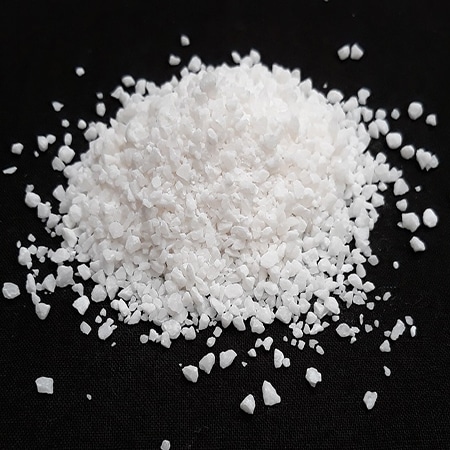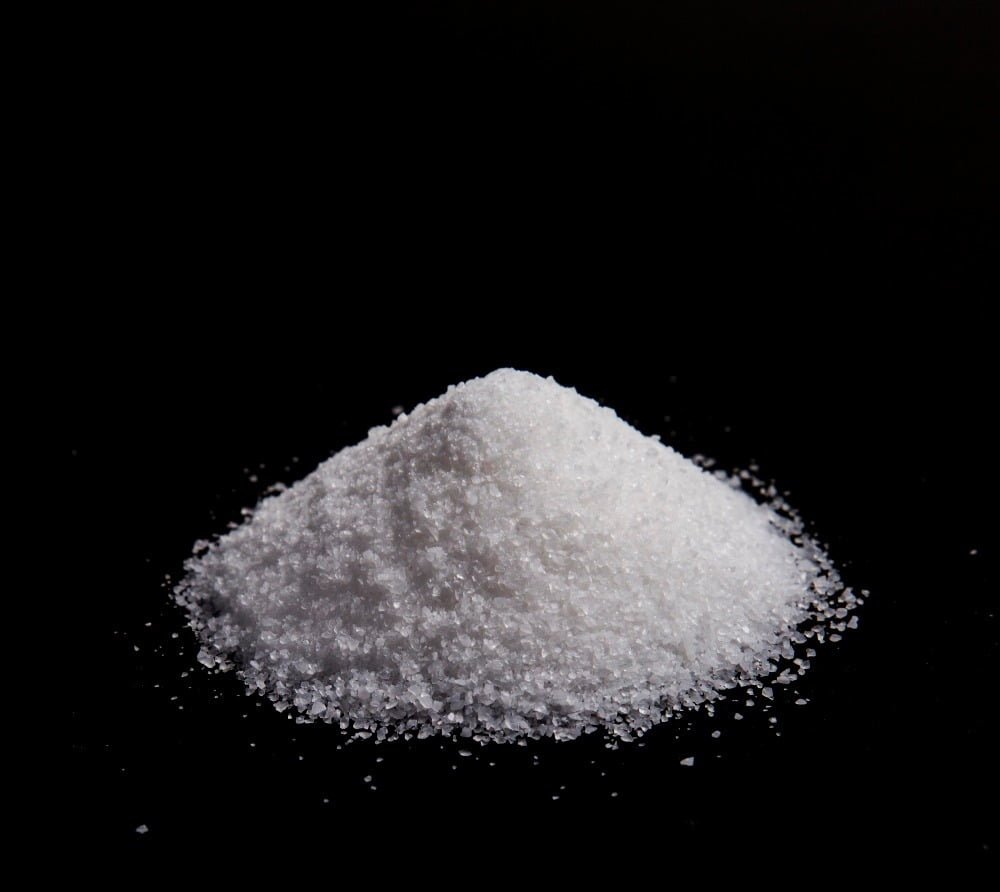

Aluminium sulfate
Aluminium sulfate is a salt with the formula Al2(SO4)3. It is soluble in water and is mainly used as a coagulating agent (promoting particle collision by neutralizing charge) in the purification of drinking water and wastewater treatment plants, and also in paper manufacturing.
The anhydrous form occurs naturally as a rare mineral millosevichite, found for example in volcanic environments and on burning coal-mining waste dumps. Aluminium sulfate is rarely, if ever, encountered as the anhydrous salt. It forms a number of different hydrates, of which the hexadecahydrate Al2(SO4)3·16H2O and octadecahydrate Al2(SO4)3·18H2O are the most common. The heptadecahydrate, whose formula can be written as [Al(H2O)6]2(SO4)3·5H2O, occurs naturally as the mineral alunogen.
Aluminium sulfate is sometimes called alum or papermaker's alum in certain industries. However, the name "alum" is more commonly and properly used for any double sulfate salt with the generic formula XAl(SO4)2·12H2O, where X is a monovalent cation such as potassium or ammonium.
Uses
- Aluminium Sulfate is used in water purification and as a mordant in dyeing and printing textiles. In water purification, it causes impurities to coagulate which are removed as the particulate settles to the bottom of the container or more easily filtered. This process is called coagulation or flocculation.
- When dissolved in a large amount of neutral or slightly-alkaline water, aluminium sulfate produces a gelatinous precipitate of aluminium hydroxide, Al(OH)3. In dyeing and printing cloth, the gelatinous precipitate helps the dye adhere to the clothing fibers by rendering the pigment insoluble.
- Aluminium sulfate is sometimes used to reduce the pH of garden soil, as it hydrolyzes to form the aluminium hydroxide precipitate and a dilute sulfuric acid solution. An example of what changing the pH level of soil can do to plants is visible when looking at the Hydrangea macrophylla. The gardener can add Aluminum sulfate to the soil to reduce the pH level which in turn will result in the flowers of the Hydrangea turning a different color.
- Aluminium sulfate is the active ingredient of some antiperspirants; however, beginning in 2005 the US Food and Drug Administration no longer recognized it as a wetness reducer.
- Aluminium sulfate is usually found in baking powder, where there is controversy over its use due to concern regarding the safety of adding aluminum to the diet.
- In construction industry it is used as waterproofing agent and accelerator in concrete. Another use is a foaming agent in fire fighting foam.
- It is also used in styptic pencils, and pain relief from stings and bites; it is the active ingredient in popular pain relief products such as Stingose.
- It can also be very effective as a molluscicide, killing spanish slugs.
Precautions
- Explosion hazard: This product is non-flammable and irritating.
- Health hazards: It has a certain irritating effect on the eyes and mucous membranes. Ingestion of a large amount of aluminum sulfate will irritate the mouth and stomach.
- Skin contact: Take off contaminated clothes and rinse with running water.
- Eye contact: Lift the eyelids and rinse with running water or saline. Seek medical attention.
- Inhalation: Leave the scene to a place with fresh air. If breathing is difficult, give oxygen. Seek medical attention.
- Ingestion: Drink enough warm water and induce vomiting. Seek medical attention.
- Hazardous characteristics: No special combustion and explosion characteristics. High heat decomposition produces toxic sulfide fumes.
- Harmful combustion products: Natural decomposition products are unknown.
Fire extinguishing methods
Firefighters must wear full-body fireproof and anti-gas suits and extinguish fires in the upwind direction. When extinguishing a fire, move the container from the fire scene to an open area as much as possible.
Emergency treatment
Isolate the leaked contaminated area and restrict entry and exit. It is recommended that emergency response personnel wear dust masks (full-face masks) and anti-toxic clothing. Collect with a clean shovel in a dry, clean, covered container and transfer to a safe place. If a large amount of leakage occurs, collect and recycle or transport to a waste treatment site for disposal.
Operation precautions
Closed operation, local exhaust. Operators must undergo special training and strictly abide by the operating procedures. It is recommended that operators wear self-priming filter dust masks, chemical safety protective glasses, anti-toxic penetration work clothes, and rubber gloves. Avoid dust. Avoid contact with oxidants. Load and unload gently during transportation to prevent packaging damage. Equipped with leakage emergency treatment equipment. Empty containers may have harmful residues.
Storage precautions
Store in a cool, ventilated warehouse. Keep away from fire and heat sources. It should be stored separately from oxidants and should not be mixed. The storage area should have suitable materials to contain leaks.
Storage and transportation
The packaging should be complete and the loading should be secure when shipping. During transportation, ensure that the container does not leak, collapse, fall, or become damaged. It is strictly prohibited to mix and transport with oxidants, edible chemicals, etc. During transportation, it should be protected from exposure to sunlight, rain, and high temperatures. The vehicle should be thoroughly cleaned after transportation.
If you are interested in our products, please contact:
Bill Zhang
Sales Director
SHANDONG SUMCHEMICALS CO., LTD.
Mobile/ WhatsApp: +86 156 6271 5985
QQ: 3267823033
Wechat: billzhang5985
E-mail:
E-mail:
